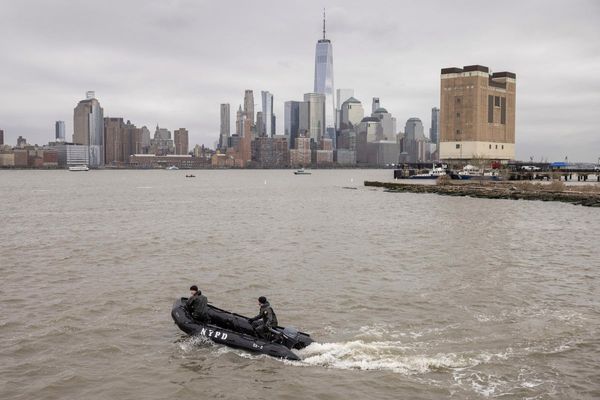
I am also a child of Italian football. My school was called AC Milan. The 4-0 win against Barcelona in the 1994 Champions League final was the benchmark in my training for how a team attack and defend together. What distances do we keep? Who is responsible for winning the ball? When are cross-field passes forbidden? No other game was shown more often by our Swedish chief instructor Björn Andersson; he must have seen it a hundred times.
My other experience of Italy: I suffered heavy defeats during my career. In my youth, playing against Italian teams was a nightmare. At tournaments in Sicily, Viareggio or Sardinia, we got nothing for free and always took a beating. Later, we lost the semi-finals of the 2006 World Cup and the 2012 Euro with the national team.
In my first European final with Bayern, in 2010, we were beaten 2-0 by Inter. Led by the defensive maestro José Mourinho, Inter scored two goals after long balls. We, only at the beginning of a development, were tactically immature and overwhelmed as a collective.
So I know what makes Italian football strong. I should say: what made it strong. Because this Champions League title was the most recent. Once the world’s best league, Serie A could soon (as it was from 1969 to 1984) have been watching for 15 years as others win the big trophy. This season, Inter are Italy’s last team – and against Bayern in the quarter-finals, whose first leg takes place on Tuesday, they are not the favourites.
You could see in 2010 that something was ending. Inter needed a huge amount of luck to survive the semi-final against a superior Barcelona. In the first leg, a volcano in Iceland helped, its eruption hampering the journey from Spain. In the second leg, Inter barricaded themselves in the box in a bizarre way. That rarely goes well. Mourinho probably sensed it, left as a triple winner and moved to Madrid.
In the past, everyone wanted to go to Italy. Milan was the football capital of the world. Here in Germany, a sentence from Andreas Möller became a familiar saying: “Milan or Madrid, as long as it’s Italy!” (“Mailand oder Madrid – Hauptsache, Italien!”) Everyone still understands what he meant, not just Italy holidaymakers like me.
The basis for the superiority was Arrigo Sacchi’s ball-oriented zonal marking, which is still the operating system of football. The whole of Italy adopted it, giving them a huge advantage. In the 90s, Milan reached the final three times in a row, followed by Juventus three times. Clubs such as Sampdoria, Parma and Lazio won European trophies. In 2003, there was the final between Juventus and Milan.
The downturn has various reasons. For example, many Italian clubs are no longer in the hands of patrons from their home country, but in those of investors from the US. In England, capital from abroad is accepted, but in Italy, identity and meaning have apparently been lost as a result of this sell-out.
You can see that in the outdated stadiums. I’m surprised about this; after all, we are talking about the country where the Colosseum is located. Italy will modernise its arenas for the 2032 Euros. There are plans to rebuild San Siro, once the Scala of football. That’s good: a society needs sustainable and family-friendly places to meet to celebrate football as a cultural asset.
But the crisis has one main sporting cause: on the pitch, there is a lack of initiative, commitment, athleticism. Italy spends a lot less than the four other top leagues in Spain, England, France and Germany. The players run less. I read a statistic a few years ago that said that the Bundesliga team with the lowest values ran more than the team with the highest values in the Serie A. Italy has not updated its operating system; it works too slowly.
The problem is not new. I still remember how Mourinho substituted two strikers in the first leg against Barcelona in 2010 and three strikers in the second leg because they were getting cramp. In regulation time, not in extra time. This lack of dynamism has continued, and it leads to a quality problem. Where the opponent pressure is too low, no player develops his skills to world class. That’s why there is no Baggio, no Del Piero, Cannavaro, Maldini, Baresi, Gattuso or Pirlo.
Today’s Italian teams remind me of a Ferrari that has been throttled back from 200 horsepower, with a half-full tank of fuel, and runs out of fuel 10 laps before the finish. Even the most beautiful design won’t help. Italy were better organised than Germany in the Nations League last month but they couldn’t handle the Germans’ intensity. To borrow from a famous Giovanni Trapattoni press conference with Bayern in 1998: Italy played like an empty tank.
Tactically, Italy’s footballers are still good, especially in comparison with the Germans and the English. They’ve all got the ball-oriented defending, the details in one-on-one duels and risk management. The national team benefit from this time and again. In a tournament with seven games, this can work out really well, as it did for the 2021 Euro title.
But resting on a 1-0 lead can go wrong. All men behind the ball – that’s something nations such as Georgia have also mastered by now: see Euro 2024. And so the four-time world champions recently missed out on the World Cup twice. Italy last won a World Cup knockout game in 2006.
Italy’s tactical clarity helps its coaches to win major club titles. Carlo Ancelotti has been successful for more than two decades, but not in his home country for a very long time. We have to go back to the 90s for the time when Marcello Lippi, Trapattoni and Fabio Capello were the who’s who of the coaching ranks.
How can this traditional football nation find its way back to its former glory? It doesn’t seem that complicated. Another heavy defeat brings me to this conclusion. We were knocked out in the 2016 Champions League semi-finals by Atlético Madrid. Our opponents gave 180 minutes of the highest intensity. We didn’t get anything for free at any point. Diego Simeone’s football still impresses me.
The good news for Italy is that you can still win with defensive football. But slowing down is not the answer; grandezza alone is no longer enough. You need to add something: power when winning the ball, activity in possession, an unrelenting desire to conquer and attack, the Simeone style. You can learn a lot from the passion of this Argentinian coach. In fact, the whole of Italy should be playing like Atlético.
Philipp Lahm’s column was produced in partnership with Oliver Fritsch at Zeit Online, the German online magazine.







